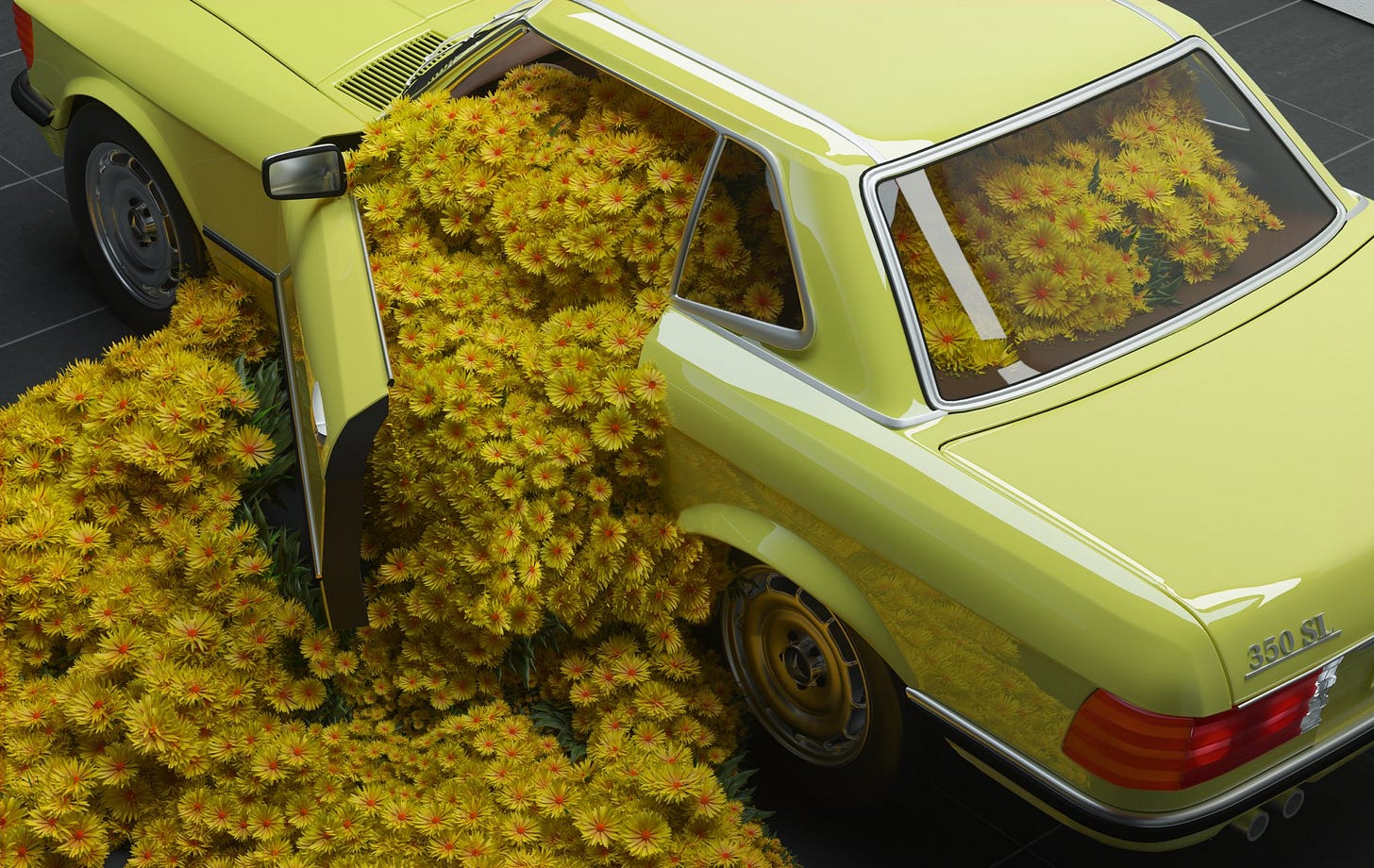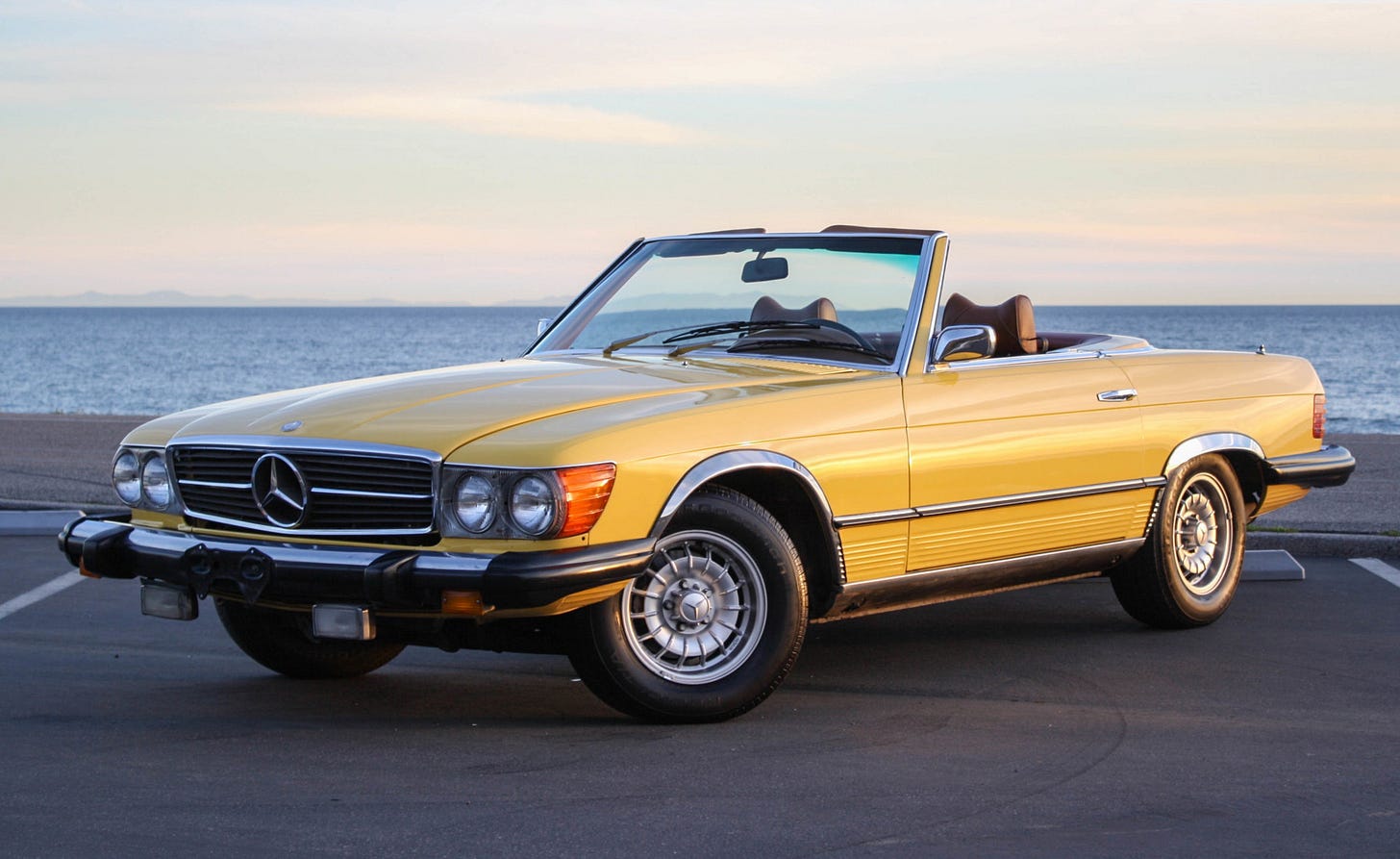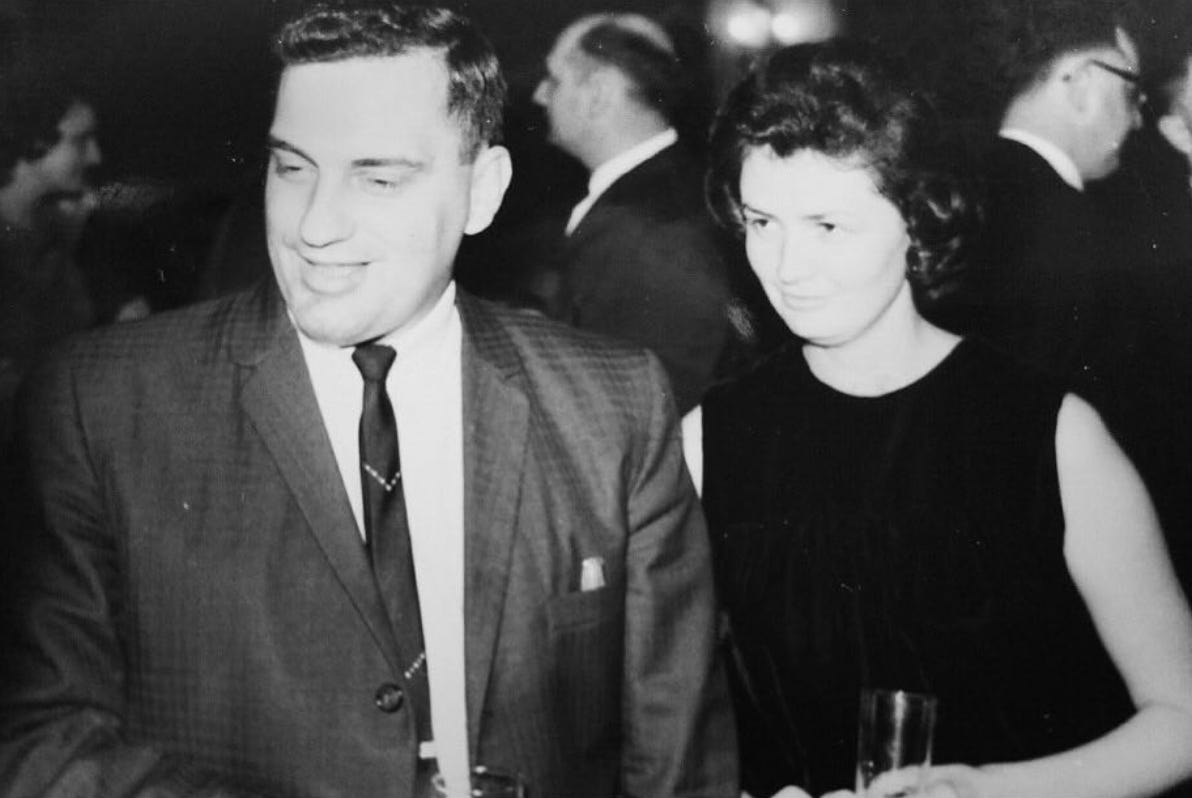Anyone else develop a bit of an addiction to perusing 1st Dibs and Chairish since the start of the year?
In the summer of 2020, I fell in love with the idea of me behind the wheel of a banana yellow 1978 Mercedes 450SL convertible. Tan leather interior. Burled wood veneer on the dashboard. Located in Florida (not so far from my home in Charleston, SC) and listed at $15k, which now sounds like a steal.
Since then, I’ve fallen for a dozen other cars. I’ve got a type: eighties, boxy, beat up just enough to be a daily driver. Of course, the one thing that keeps changing are the prices, which have only gone up (then up some more) in the past two or so years.
As much as I like to think I’m the type to ‘carve my own path’, articles like Old Trucks for New Money and social accounts like @RacquetClubLA (basically a visual orgy of 80s/early 90s yuppiedom) make it very clear that I’m not the only one crushing on analog living.
The more that our lives are given over to the rounded corners and sleek efficiency of the digital aesthetic, the more we seem to fetishize the clunky, the rumbly, the defiantly inefficient.
Rachel Monroe, Old Trucks for New Money. The New Yorker (Nov. 30, 2021).
We millennials have reached a chapter of our lives that some might dub ‘settling down’. Whether or not we have the purchasing power or financial stability that our parents had at our age, we’re ready to do things like own houses, spend weekends dicking around in our yards, buy a fun car, and ‘stay in’ rather than ‘go out’.
For generations, this American rite of passage from one’s early adulthood into actual adulthood looked a bit different than the previous cohort. As the world continued to modernize, so did the aspirational representation of upper middle class living. And yet, something curious is going on amongst Gen Y as we enter this new life phase.
Today’s tastemakers don’t have a singular aesthetic; the eternal debate between minimalism and maximalism lives on. Some argue that it’s time for bold color and pattern and others maintain loyalty to temples of beige.
Regardless of style preferences, today’s trendsetters have one thing in common: looking back, not forward for inspiration. Brand new is not cool.
Some writers will have you believe that Gen Y is buying second-hand in an effort to be more sustainable. While this sounds good and noble, I don’t believe it’s the whole story. My sense is that this phenomenon is more psychological, even subconscious. I think a lot of us simply like being around things that feel collected, imperfect, and unique, whether or not we can articulate exactly why that is… and if that’s better for the planet: great.
When did ‘new’ lose its luster?
I think of my dad’s parents as the epitome of the ‘new is cool’ generation. They came of age in a just-post WW2 society. For them, their 20s and 30s coincided with truly new ways of seeing the world - as modernism and minimalism became mainstream - and when upward mobility for middle-class Americans was a thing. My proudly progressive grandparents (Don & Joan) were all-in on new: new furniture, new appliances, new cars, new technology.
But, this was a time when ‘new’ was still well-made; furniture from solid wood, appliances and cars without a bunch of plastic parts - that could run forever if taken care of. I think for them, ‘new’ represented progress; an indicator of being forward-thinking.
Over time, ‘new’ became something else: McMansions with Tuscan-inspired kitchens, floors that looked like wood, but weren’t. The idea was often rooted in maintaining the illusion of perfection or appearing ‘luxe’ even if actually a facade; design by imitation. And people were proud of it - “Can you believe these floors aren’t wood?!”
A threshold on ‘fake’.
Those of us born before the nineties are old enough to remember days before the Internet was ubiquitous. The 80s/early 90s fantasies hit us hard because they exist on the fringes of our memories. As globalization made it possible for big ticket items to be more affordable, over time, we’ve learned that the more affordable counterparts are kind of shitty.
Still - ‘fake’ is everywhere today, perhaps especially when it comes to how people project themselves and their surroundings on social media. There’s an exhaustiveness to anything trying to be something it isn’t. At once, old things have a way of providing comfort and I think, also act as a signal to others; where my grandparents wanted to show that they were forward-thinkers, we want people to know that we’re informed.
Of course, there’s some humor in how sites like 1st Dibs almost give one the sense that they can reconstruct their own narrative. There’s an opportunity to project a richer family history. That beautiful antique chest didn’t belong to your grandma… but it belonged to someone’s grandma.
In a broader sense, there is a consensus - unspoken and spoken - that where we are headed doesn’t look so great. It is an unusual event for a swath of the population to lose faith in the future. Increasingly, ‘modern’ has become synonymous with digital or virtual, and a lot of us aren’t sold on it.
In an effort to be optimistic, my sense is that those of us who feel pulled to the past, toward not only old things, but also toward revisiting and understanding old ideas, aren’t giving up on the future, but have no interest in moving forward blindly.
-A







